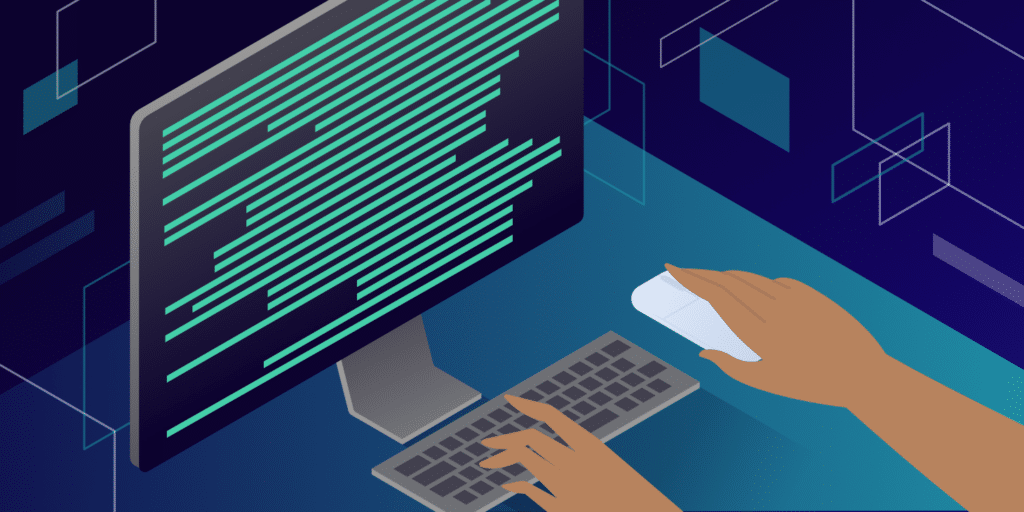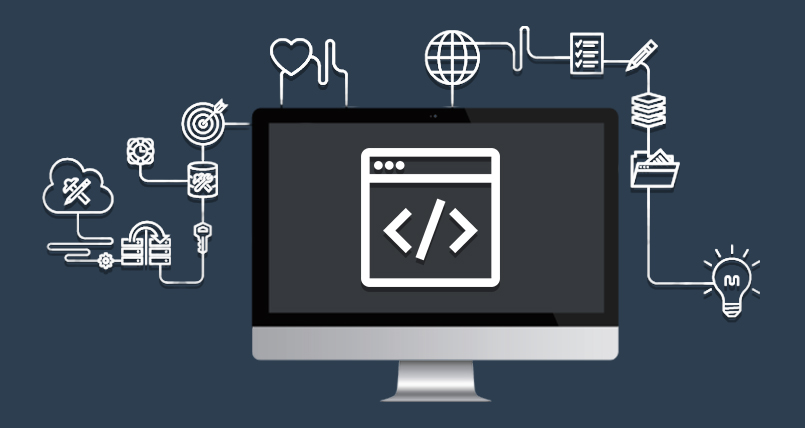Does Your App Need a Backend? Checklist for Mobile App Startups

Why You Need Backend Development for Your Mobile App
How many apps do you have on your phone? According to Techjury, an average mobile user has over 80 applications installed on their devices. All of them have different interfaces and features, and since they’re the only things you see, you might think that’s all there is to an app. However, every application has an invisible orchestrator that handles all the heavy lifting — backend. What exactly is it, and why do apps need it? Let’s find answers to these and more questions in this post.
Frontend Vs. Backend: What Are They Responsible For?
The frontend is the part of your mobile app you can interact with: the user interface (UI), navigation, images, videos, buttons, etc. The backend is what you cannot see, but it's the powerhouse of any mobile app. It is responsible for exchanging information between your app and servers, processing and storing, syncing data, etc.
Frontend and backend are two distinct aspects of mobile app development. This means you need to hire two different talents to develop each aspect. Full stack development is the rare case of finding a talent capable of performing both frontend and backend development of your mobile application.
Let’s compare the two based on their core features.
Frontend and Backend Elements
Frontend comprises the following:
- HTML, JavaScript, and CSS for markup and design
- Usability testing
- Search engine optimization
- Graphics and images design and editing
- Performance testing
Backend compses the following:
- Programming languages like Python, Java, or PHP
- Connecting server with a mobile application
- Database management
- Data storage and synchronization
- Security and backup

4 Types of Mobile ABackend
Backend development runs on a remote server and is a complex interaction between servers and machines. There are different types of mobile app backend development options. Let's examine each of them.
1. Custom Servers
Using custom servers means you take responsibility for the management and security of the system. Of all backend development options for mobile applications, you get the most flexibility, scalability, reliability, and security from custom servers. Nonetheless, it's important to note that it's costly to set up, and you need top-rated talents to execute projects of this nature.
2. Cloud Servers
Cloud servers backend development uses the cloud to provide backend support for IT businesses. It is popular for its global scalability, on-demand self-service, optimal performance, and cost-effectiveness. Cloud servers comprise hardware and software in a remote location, and the frontend syncs with the cloud to provide on-demand services for users. Google App Engine, Amazon AWS, and Microsoft Azure are examples of cloud servers aiding in offering backend development as a service.
3. SaaS
Solution-as-a-service is when the backend development requirement for your mobile application is already available in the market. This means that some third-party service providers charge business owners like you in that niche/industry a service fee for using their backend. All you have to do is plug in your frontend to their backend. Voila, you have a mobile application ready for use.
Examples of some of these backend developments for mobile app service include AccuWeather API for apps that need weather updates and Shopify Headless commerce for eCommerce businesses.
The advantages of this backend mobile development option include: low cost, no need to hire a backend development team, and fast delivery. Nonetheless, it's important to note that you have less flexibility, scalability, and little to zero customization.
4. MBaaS
Mobile backend development-as-a-service leverages the downsides of SaaS and provides IT business owners the luxury of getting more customization without having to build a solution from scratch. This option is often used for apps that store data, require authentication, provide login/registration functions, and push notifications, amongst others. You can simply integrate your pre-developed features with their backend because the platform allows custom codes external to their system. It is ideal for IT startups that want more functionality without increasing their in-house backend capabilities and resources. Some examples of MBaaS service providers include Parse, Firebase, and Amazon Web Services mobile.
With MBaaS, you get more flexibility than SaaS; instead of a subscription-based service, you pay for only what you use. MBaaS also has ready-to-use and pre-programmed libraries. Nonetheless, it's important to note that a backed service outage from your MBaaS supplier will affect your mobile app, and it's costly if you want scalability.
Do All Mobile Apps Need a Backend?
No, not all mobile apps need a backend to be functional. Applications that do not interact with online resources, ask for data, use push notifications, leverage personalization, chat messaging, or store information online/on the mobile app can work without a backend. These apps store data on the phone's storage and don't process data or exchange data.
Apps That Function Without a Backend
Examples of functional apps that are functional include: calculator, voice recorder, measurer, compass, camera, notepad, games like Tetris, etc. All of these self-contained mobile applications do not need interaction with the backend to be functional. For example, the calculator can do mathematical operations using just the smartphone’s capabilities. A camera saves photos on your phone with an optional backup if you use a cloud service. Tetris is a single-player game, so it works great without a backend. Multiple-player games need backends because they require connectivity, sharing, and syncing of game players' data.
What Features Require a Backend?
Mobile applications that require storage, processing, analyzing, and sharing data require a backend. If your application collects user information, requires people to register/login has a user authentication system, analyzes user data to achieve personalization, makes information across multiple devices, uses personalization, uses a cloud service, or shares data with others apps, then it needs a backend to be functional.
Mobile Apps That Require a Backend: A Checklist to Refer To
For reference, here’s a checklist to ascertain if your mobile app needs a backend. find it in the list below:
- You need to collect or save any type of user information.
- Your app displays personalized/dynamic data that is based on user behavior.
- Your app needs a user authentication method.
- You want users to access their information across multiple devices (data synchronization).
- Your users consume the content you create via an app.
- Your app needs access to the Internet.
- Your product needs an admin panel or a back office to manage the content of the application.
- Your app requires constant updates (in real-time).
- Your app collects orders or processes payments.
- You want your users to communicate with each other (messengers).
- You want to send notifications, promos, or news to your users (targeted messaging).
- You need to process any amount of data.
- You want to separate your business logic from your mobile app.
- If you need a backup for your mobile app data.
- If you need to add functionality to the app’s forms, profiles, accounts, or other UI functionality.
Backend Services for Mobile App Projects
Here’s how different types of mobile apps use the wonders of backend development:
Games
Games often require users to log in/register their accounts. Some game servers store game data, ensuring that users can resume games wherever they last stopped. Many games that engage gamers the most use cloud-based services to deliver maximum experience and on-demand services for gamers. All these features need backend development.
Streaming Services
Steaming services use a cloud service to provide on-demand services to users. For this singular reason, it is impossible for any mobile app offering streaming services without a backend to be functional to users.
Messengers
Mobile applications that require chat messaging need a backend to be functional. Messenger apps leverage connectivity to share information across different applications or devices.
Geolocation Apps
Geolocation apps use real-time data to provide information to users. To do that, the content of the apps requires frequent updating, sharing, and connectivity across different interfaces.
Online Shops
Online shops use a number of services that require a backend. They need a back office for managing items, authorization/login options, connected APIs for payment, data syncronization and backup, etc. This makes a backend crucial to the development of any app that features an online shop.
IoT Apps
IoT apps leverage the backend to share information and provide smart services about specific products/services. Without a backend, apps that are built on IoT ideas will not be functional to users.
Conclusion
The backend is an integral part of any application that stores, processes, analyzes, or supports the sharing of data. There are several types of backend services you can use, including custom servers, cloud servers, SaaS, and MBaaS. Your choice depends on your budget as well as your security and flexibility requirements.
Like this article
